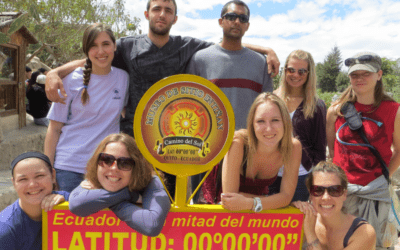Have you ever considered the role of technology as a method to increase access to students with disabilities on your university’s study abroad programs?
It’s a question that all people in the exchange field should ask themselves because, without their active participation, technology can become a barrier or a burden rather than a ramp or a bridge for students with disabilities.
It should go without saying that reaching #EveryStudent means reaching students with disabilities. According to the National Center for Education Statistics, including disabled students in recruitment and enrollment efforts means that you are accessing an extra 10% of your average undergraduate class, which would otherwise be overlooked. But it’s more than that. Disability cuts across race, gender, class, and sexual preference, just to name a few. By seeking to include students with disabilities as part of the #EveryStudent promise, you are also seeking students from other diverse backgrounds including LGBTQ, gender, race, first-generation and low-income students.
Many universities employ technology as an innovative tool to recruit and support students studying abroad. It can help streamline student-program interactions while making it easy for both sides to exchange information. Yet technology can also create unnecessary barriers for students with disabilities.
If an online application form for a study abroad program does not use the proper HTML tags, has poor contrast, or uses complex language and distracting elements, it can bar a student with a disability from applying. If there are not multiple methods for contacting a program such as through texting and voice protocols, it can shut out a deaf or hard of hearing student. Wordy pamphlets distributed at a study abroad fair without accessible online versions with contact information, make it impossible for the curious student to educate themselves about the possibilities. Showcasing inaccessibility from the point of recruitment can lead to discouragement for many students with disabilities.
Technology has also created significant advancements for people with disabilities seeking to participate in international exchange.
In fact, technology could solve every one of the problems posed above.Concise Information on exchange programs can be easier to access than ever. Texting and voice over IP applications can enable perspective deaf participants to connect with advisors. Electronic formats such as HTML and Microsoft Word mean that blind participants can inform themselves about program offerings, requirements and policies.
In addition to sharpening interactions between students and exchange programs, technology can also expand access to the world at large for people with disabilities. It can propel a wheelchair user over a cobblestone pathway. It can connect a student with mental health disabilities to their psychologist at home. It can enable a deaf person to communicate with hearing colleagues.
Yet technology is not a force, but rather a tool for inclusion. And like a tool, it can be used for good or bad. It is up to international exchange providers to ensure that the technology that they use in their programs is the billboard that says “welcome” rather than “disabled need not apply”.
Your institution can take an active role in making sure that technology is a bridge rather than a barrier to international exchange for students with disabilities. Collaborate with your host partners to ensure availability of country-specific information on study abroad programs including information on accessibility and disability culture. Ask your web developer how they have designed your website to comply with W3CAG standards. Check with your enrollment management software provider about accessibility of application forms and portals where accepted participants upload information about themselves. And invite students from the campus community to test it all out in exchange for work-study.
Technology can be a great tool for removing barriers so that every student can study abroad. How will you use it in your institution?
Guest post from: Justin Harford, Project Coordinator, Mobility International USA




